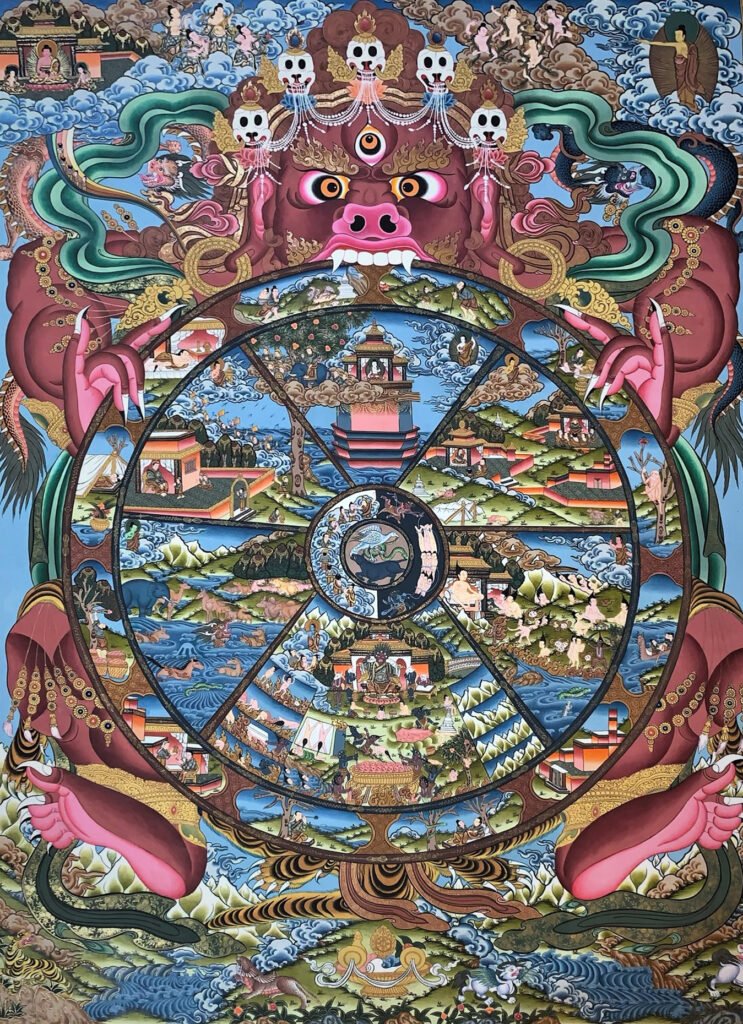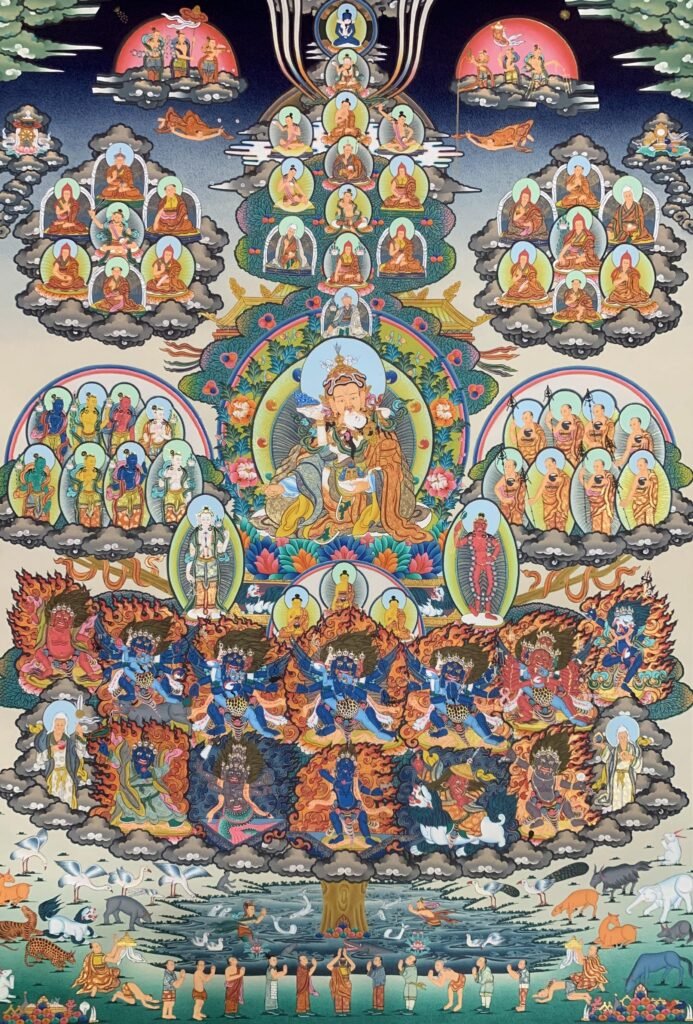Ratnasambhava Buddha
རིན་ཆེན་འབྱུང་གནས།
of the Ratna Family
རིན་ཆེན་རིགས།
Buddhas of the Ten Directions
ཕྱོགས་བཅུའི་སངས་རྒྱས།
Buddhas of the Ten Directions
ཕྱོགས་བཅུའི་སངས་རྒྱས།
Vairochana Buddha
རྣམ་པར་སྣང་མཛད།
of the Buddha Family
དེ་བཞིན་གཤེགས་པའི་རིགས།
Amitabha Buddha
འོད་དཔག་མེད།
of the Lotus Family
པད་མའི་རིགས།
Amoghasiddhi Buddha
དོན་ཡོད་གྲུབ་པ།
of the Karma Family
ལས་རིགས།
Buddhas of the Three Times
དུས་གསུམ་སངས་རྒྱས།
Buddha Dipamkara
མར་མེ་མཛད།
Buddhas of the Three Times
དུས་གསུམ་སངས་རྒྱས།
Buddha Shakyamuni
སངས་རྒྱས་ཤཱཀྱ་ཐུབ་པ།
Buddhas of the Three Times
དུས་གསུམ་སངས་རྒྱས།
Buddha Maitreya
བྱམས་པ།
Hayagriva
རྟ་མགྲིན།
Vemachitra
ཐགས་བཟང་རིས།
Buddha of the
Asura (Demigod) Realm
Indra Kaushika
དབང་པོ་བརྒྱ་བྱིན།
Buddha of the
Deva (God) Realm
Shakyamuni
ཤཱཀྱ་ཐུབ་པ།
Buddha of the
Human Realm
Sthirasimha
སེང་གེ་རབ་བརྟན།
Buddha of the
Animal Realm
Dharmaraja
ཆོས་ཀྱི་རྒྱལ་པོ།
Buddha of the
Hell Realms
Jvalamukhadeva
ཁ་འབར་དེ་བ།
Buddha of the
Preta (Hungry Ghost) Realm
Vajravarahi
རྡོ་རྗེ་ཕག་མོ།
Red Avalokiteshvara
རྒྱལ་བ་རྒྱ་མཚོ།
Vajrapani
ཕྱག་ན་རྡོ་རྗེ།
Eight Close Sons
ཉེ་བའི་སྲས་བརྒྱད།
Bodhisattva Vajrapani
ཕྱག་ན་རྡོ་རྗེ།
Eight Close Sons
ཉེ་བའི་སྲས་བརྒྱད།
Avalokiteshvara
སྤྱན་རས་གཟིགས།
Eight Close Sons
ཉེ་བའི་སྲས་བརྒྱད།
Mañjushri
འཇམ་དཔལ།
Eight Close Sons
ཉེ་བའི་སྲས་བརྒྱད།
Bodhisattva
Samantabhadra
ཀུན་ཏུ་བཟང་པོ།
Eight Close Sons
ཉེ་བའི་སྲས་བརྒྱད།
Bodhisattva Akashagarbha
ནམ་མཁའི་སྙིང་པོ།
Eight Close Sons
ཉེ་བའི་སྲས་བརྒྱད།
Bodhisattva
Nivaranavishkambhin
སྒྲིབ་པ་རྣམ་སེལ།
Eight Close Sons
ཉེ་བའི་སྲས་བརྒྱད།
Bodhisattva
Kshitigarbha
ས་ཡི་སྙིང་པོ།
Eight Close Sons
ཉེ་བའི་སྲས་བརྒྱད།
Maitreya
བྱམས་པ།
Eight Offering Goddesses
མཆོད་པའི་ལྷ་མོ་བརྒྱད།
Eight offering goddesses
མཆོད་པའི་ལྷ་མོ་བརྒྱད།
Akshobhya Buddha
མི་བསྐྱོད་པ།
of the Vajra Family
དོ་རྗེའི་རིགས།
Amitabha Buddha
འོད་དཔག་མེད།
A detailed explanation and description of a traditional thangka painting of the Pure Land of Sukhavati, also known as Dewachen (བདེ་བ་ཅན།), the Blissful Field of Amitabha Buddha (འོད་དཔག་མེད།), which at different places also addressed as Amitayus (ཚེ་དཔག་མེད།).
In this explanation you can find the names, both in English and Tibetan, of the individual figures and groups that are depicted in the Sukhavati thangka.
Sukhāvatī is a a Sanskrit term the describes “a realm of delight, a place where no suffering is experienced. The inhabitants of this realm are spiritually advanced beings who enjoy the presence of buddhas, bodhisattvas, and arhats, and engage exclusively in wholesome activities.”[2]
The reason for the name “Blissful Field” or “Land of Delight” for this realm, as the Buddha explained in “The Display of the Pure Land of Sukhāvatī” sutra, is that in the “Sukhāvatī world, sentient beings experience neither physical pain nor mental suffering and the causes for their happiness are limitless. For this reason, this world is called Sukhāvatī.”[2]
Sources:
- Thangka painting by TheThangka.com
- 84000 – The Display of the Pure Land of Sukhāvatī
- Rigpa Wiki – Sukhavati
- Lotsawa House – Amitābha and Sukhāvatī Series
- Himalayan Art Resources – Amitabha Buddha – Pureland (Sukhavati)









